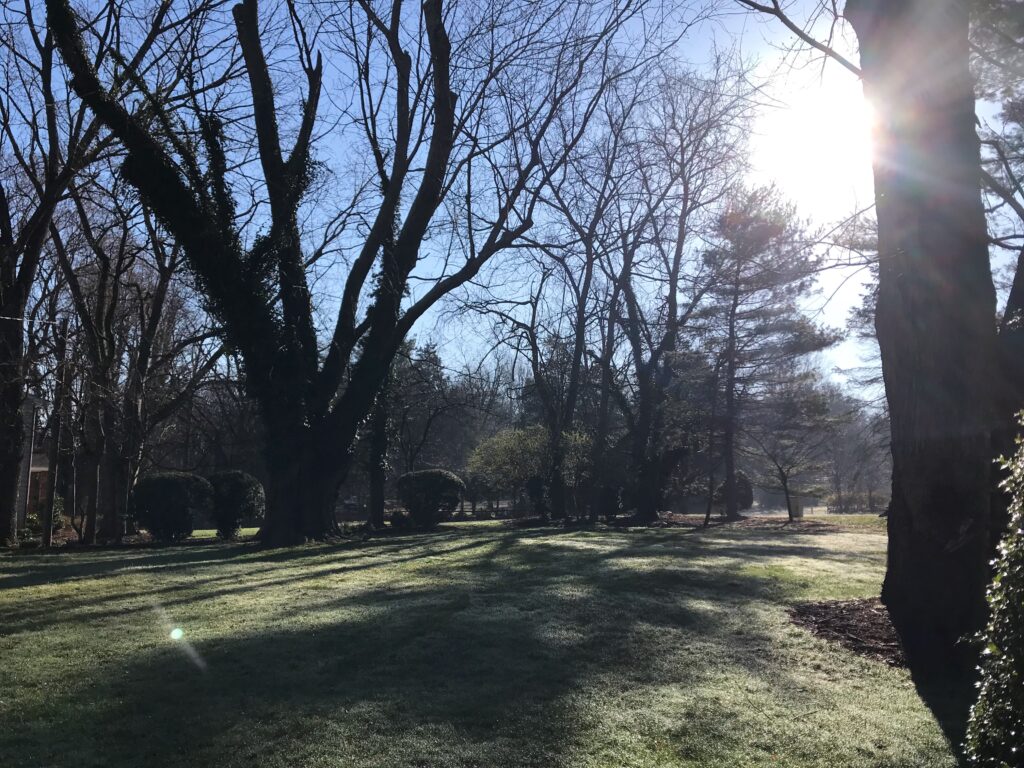For the past few years, it’s been an Easter season custom to pile our family collection of big stuffed bunnies into my VW convertible with Kiko for a photo shoot. It’s a tradition inspired by the Halloween joyrides that my dog enjoys with Slim, our skeleton friend. Naturally, a ride must follow the photo session, or Kiko is crushingly, achingly, disappointed. I wasn’t sure I’d bother with the Bunny/Beetle pics this year. With the persistence of the chilly weather, there was no need to rush. And there was this: in recent months, my elderly Shiba Inu clearly derives increasingly less pleasure from his once-favorite activity, a cruise in the car.
Gone are the days when my little dog would snap out of a deep sleep at the most tentative metallic jingle of keys, when he’d pop up with eager enthusiasm at the question, “Wanna take a ride?” Kiko has, since puppyhood, been too coolly aloof to display marked interest in the things that stir the hearts of most dogs, such as the arrival home of a pack member, a ringing doorbell, or feeding time. But a car ride was something else. It used to spark an excitement that even he couldn’t contain. I loved seeing him bursting with anticipatory joy. What a feeling that this beautiful furry creature was willing to put his complete and wholehearted trust in me! That absolute trust one tends to find only in a dog, or a child. Wherever you go, I’ll go! I don’t care where, just let me go with you!
As he ages, Kiko is apparently losing that old sense of trust, in me, and in everything in general. I guess this isn’t surprising, because his world isn’t what it used to be. Only through sleep does he appear able to attain a state resembling contentment. Fortunately he sleeps for many hours at a time. At fourteen and eight months, his compact little body must be achy, as he moves slower and with growing stiffness, especially on stairs. It takes more pacing in circles to get comfortable in any of his beds. His eyesight is less clear, his hearing less acute. He has trouble negotiating his way through our house. This doesn’t stop him from wandering tentatively, restlessly, from room to room, as though searching for something he never finds. Doors are particularly problematic: where are they, and on which side do they open? We may find him staring into a corner when indicating a desire to go out.
I still occasionally invite Kiko to ride along with me when I’m going on a quick errand. Sometimes, after several repeated attempts to get his attention, I glimpse a flicker of his former eagerness. He meets my gaze and works his way to his feet. He used to jump with easy confidence into my Beetle and up into the relatively low seat. Now he’s hesitant, uncertain at the prospect of entering the vehicle. He wants to climb in by himself, but he can’t quite remember how. When I attempt to pick him up, he struggles. Kiko used to settle quickly in the seat, facing forward, as though ready to take in the scenery. Or, on sunny days, with the top down, he often curled up, fox-like, rested his head on the center console and soon drifted off to sleep. Now, more and more, he’s anxious. Should he sit, should he stand? No position seems to offer comfort or security.
A dog’s life moves ever so quickly through the stages. There’s a fleeting infancy, a long period of toddlerhood, a few brief teenage years, and then, suddenly, old age. My feisty baby boy has become a tottering grandfatherly figure.
But, on a pleasant day, with old friends, even an elderly grandfather can still enjoy a ride in the car. Kiko showed me that he still does, as well.



































